The 80-Second Repeated Squat Jump Test with Matt Jordan, PhD
Available in:
EN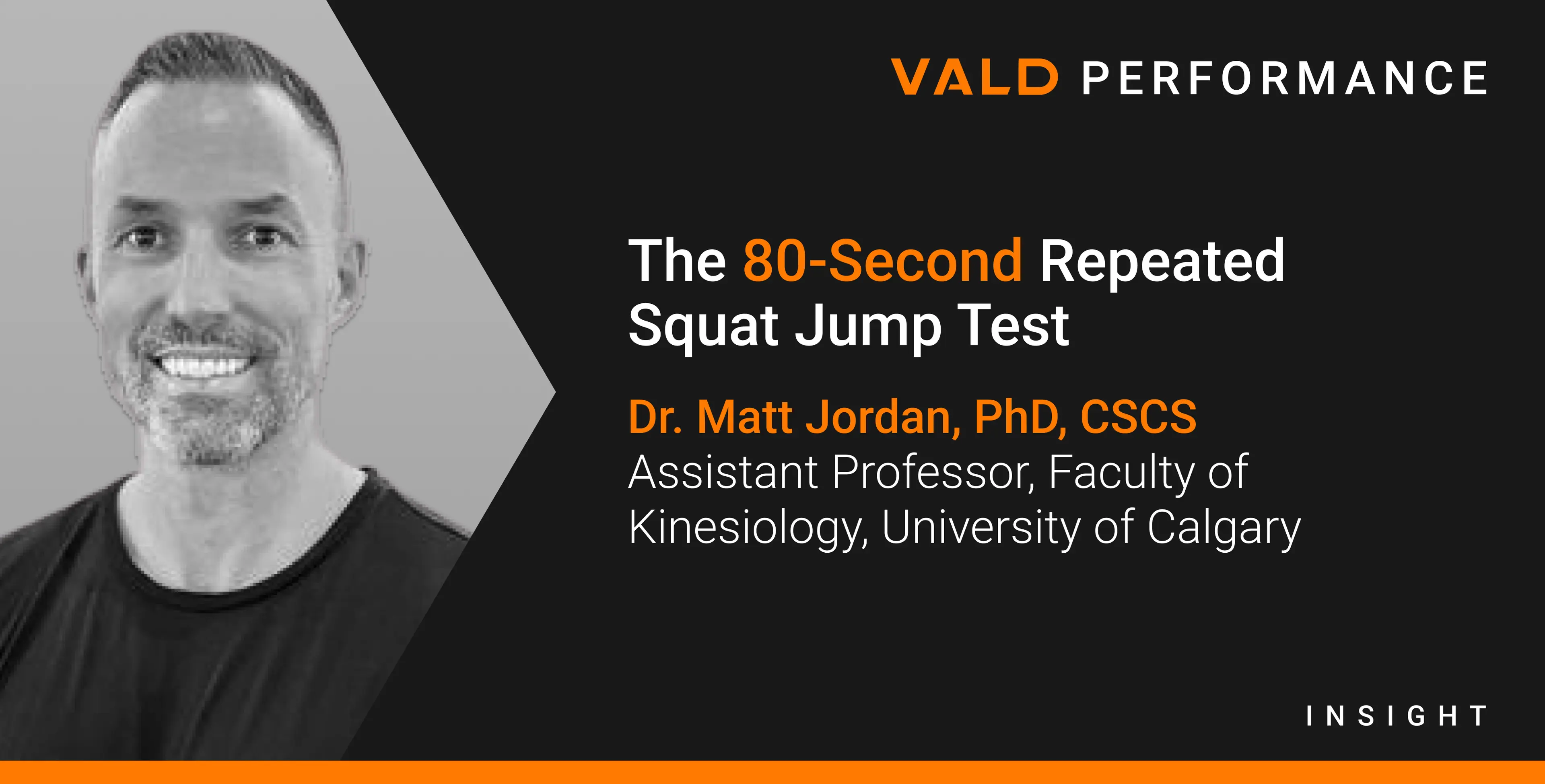
In 2017, Matt Jordan and his research team developed a tool that would change the way fatigue and performance were measured in elite athletes: the 80-second repeated squat jump test. Designed to simulate real-world fatigue conditions, this test became a powerful method for assessing how qualities like neuromuscular control and asymmetry are affected under fatigue.
Earlier this year, VALD team members sat down with Matt to learn more about its development, implementation and insights into rehab and performance.
How did the 80-second repeated squat jump test come about?
The test originated from our desire to understand how fatigue impacts neuromuscular control in athletes, particularly in ski racing. Skiing differs from team sport as athletes often suffer anterior cruciate ligament (ACL) injuries when fatigue sets in toward the end of a race. We wanted a test that could replicate the duration and demands of a typical ski run. That’s how we landed on an 80-second interval, incorporating static start positions and isometric holds to drive muscular fatigue better.
We wanted a test that could replicate the demands of a typical ski run …an 80-second interval, incorporating static start positions and isometric holds to drive muscular fatigue better.
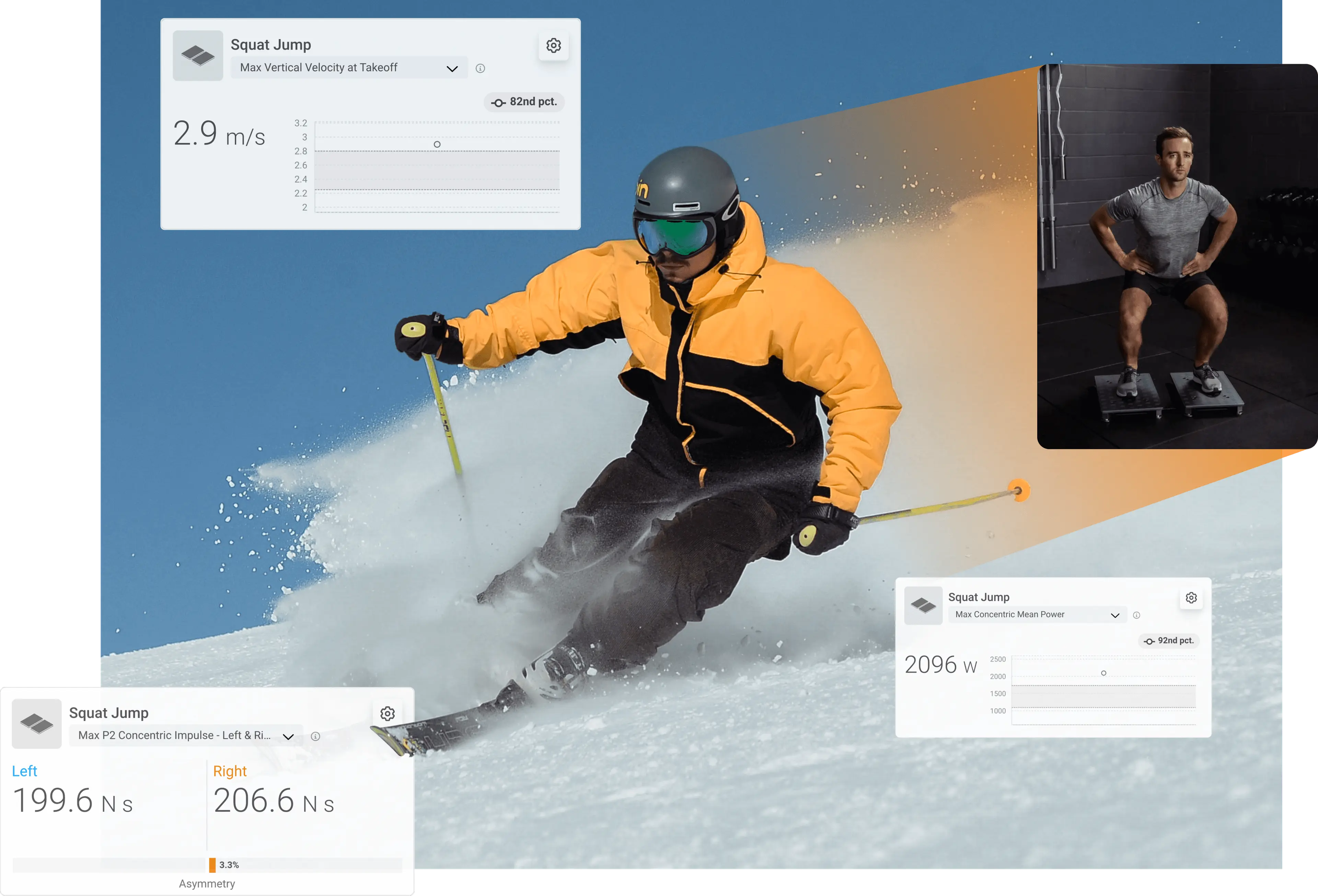
The 80-second repeated squat jump test not only evaluates overall fatigue but also offers insights into how athletes perform under stress. It’s a way to bring athletes closer to competition conditions while measuring their ability to maintain performance in a controlled environment.
Jumping Under Fatigue: Force Trace Analysis
How does a practitioner execute the test?
The 80-second repeated squat jump test is simple to execute but requires a few key points of attention. After successful zeroing and weighing periods performed on ForceDecks, the athlete slowly drops into a squat, holding 90° of knee flexion with their hands on their hips. This will be the position they spend most of their time in during the test.
After holding this position for 4 seconds, the athlete explodes upward, jumping as high as possible without performing a countermovement. Immediately upon landing, they return to the same squatted posture. The practitioner should have a profile view of the athlete to ensure a 90° knee angle is sustained after each landing. The 4-second hold, jump and landing sequence is repeated until all 20 jumps have been performed.
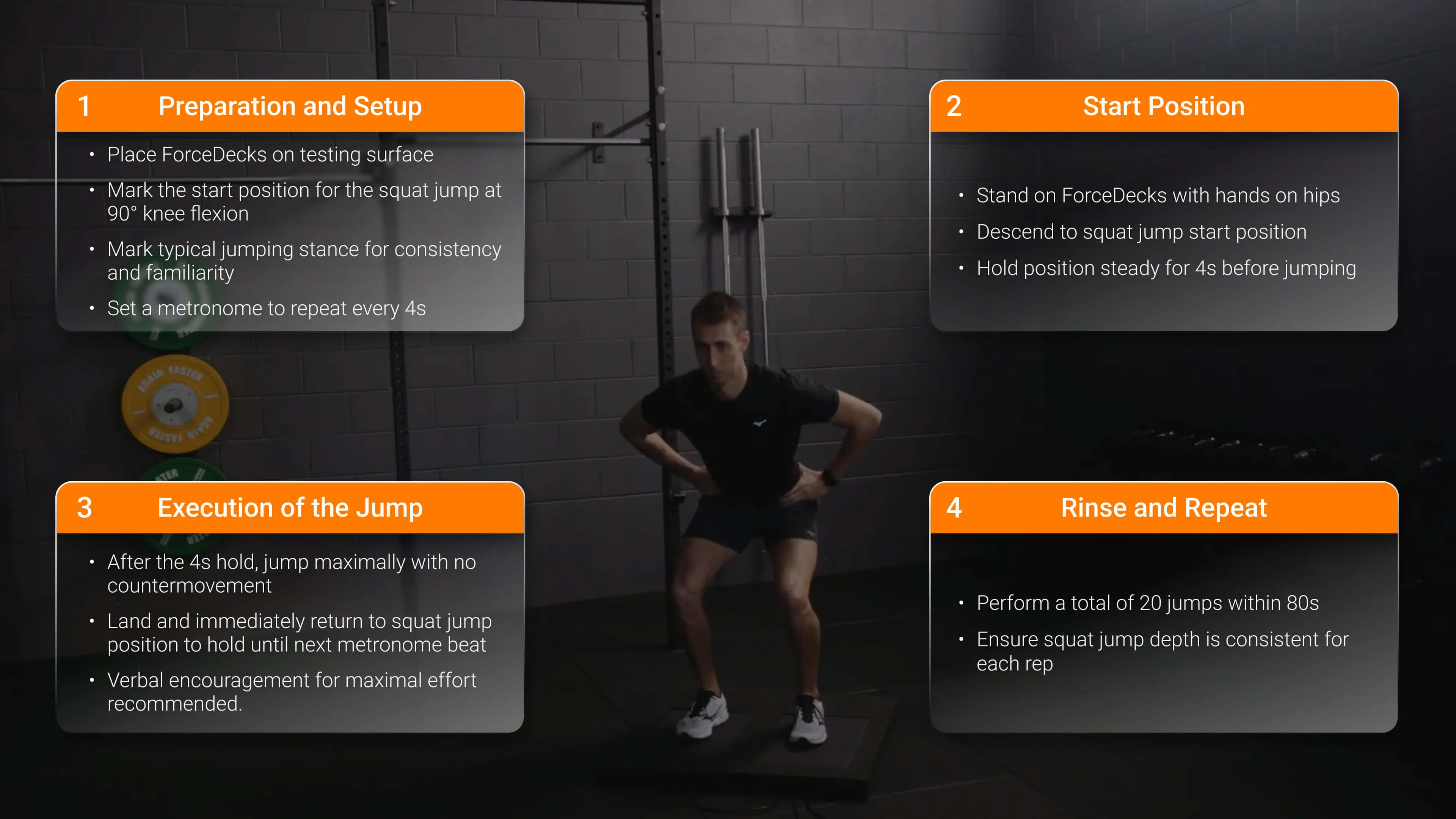
How are you defining and measuring neuromuscular control in this context?
Neuromuscular control refers to the coordination between muscle groups during movement. In one study, we used electromyography (EMG) to measure quadriceps and hamstring coactivity. This allowed us to see how neural drive changes as fatigue sets in.
Essentially, we’re looking at how muscles work together to produce movement and stabilize the body. For example, after an ACL injury, it’s common for quadriceps weakness to hold athletes back from performing, which is often assumed to be the main limiting factor for asymmetries seen on dual force plates like ForceDecks.
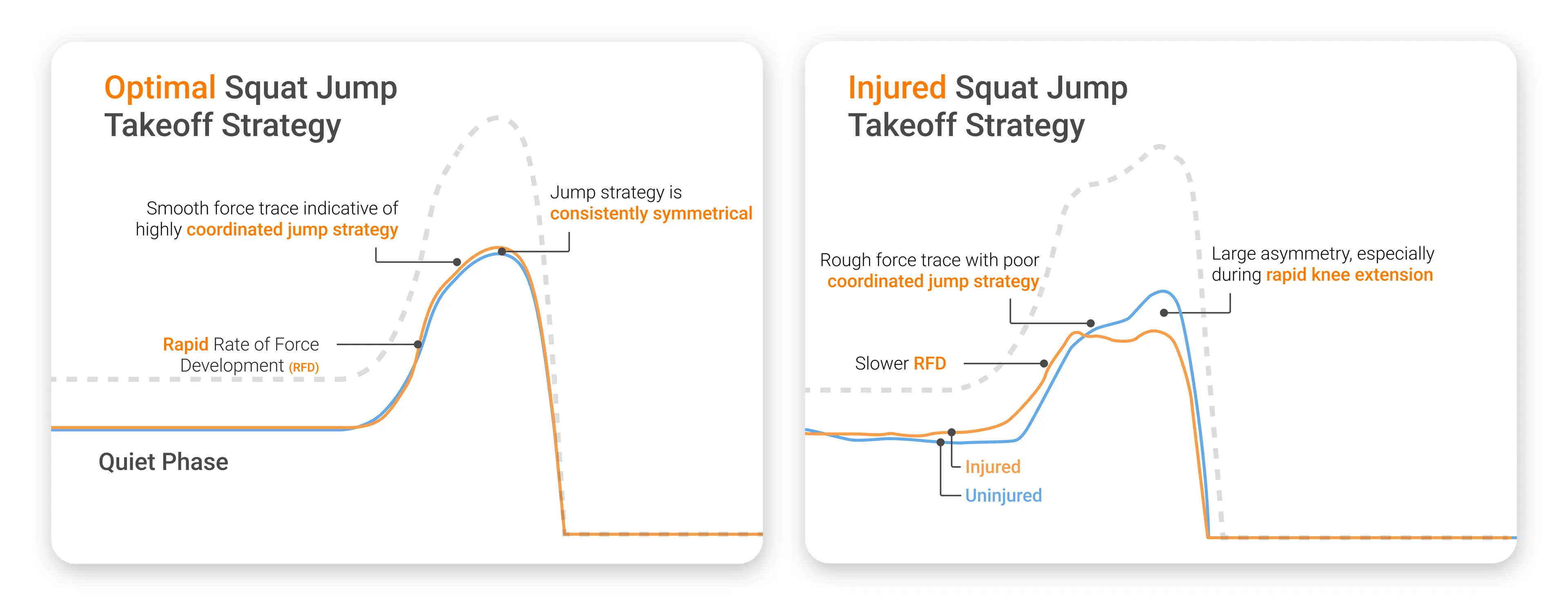
…after an ACL injury, it’s common for quadriceps weakness to hold athletes back from performing, which is often assumed to be the main limiting factor for asymmetries seen on dual force plates like ForceDecks.
However, the protective coactivity of the hamstrings acts as a guarding mechanism, which can delay the rate of knee extension during the concentric phase of the jump – a factor known to be a key determinant of jumping performance.
By analyzing this alongside force data, we can draw connections between mechanical performance and neuromuscular behavior under fatigue. This allows us to identify force trace patterns that differentiate between true force asymmetry and neuromuscular control limitations.
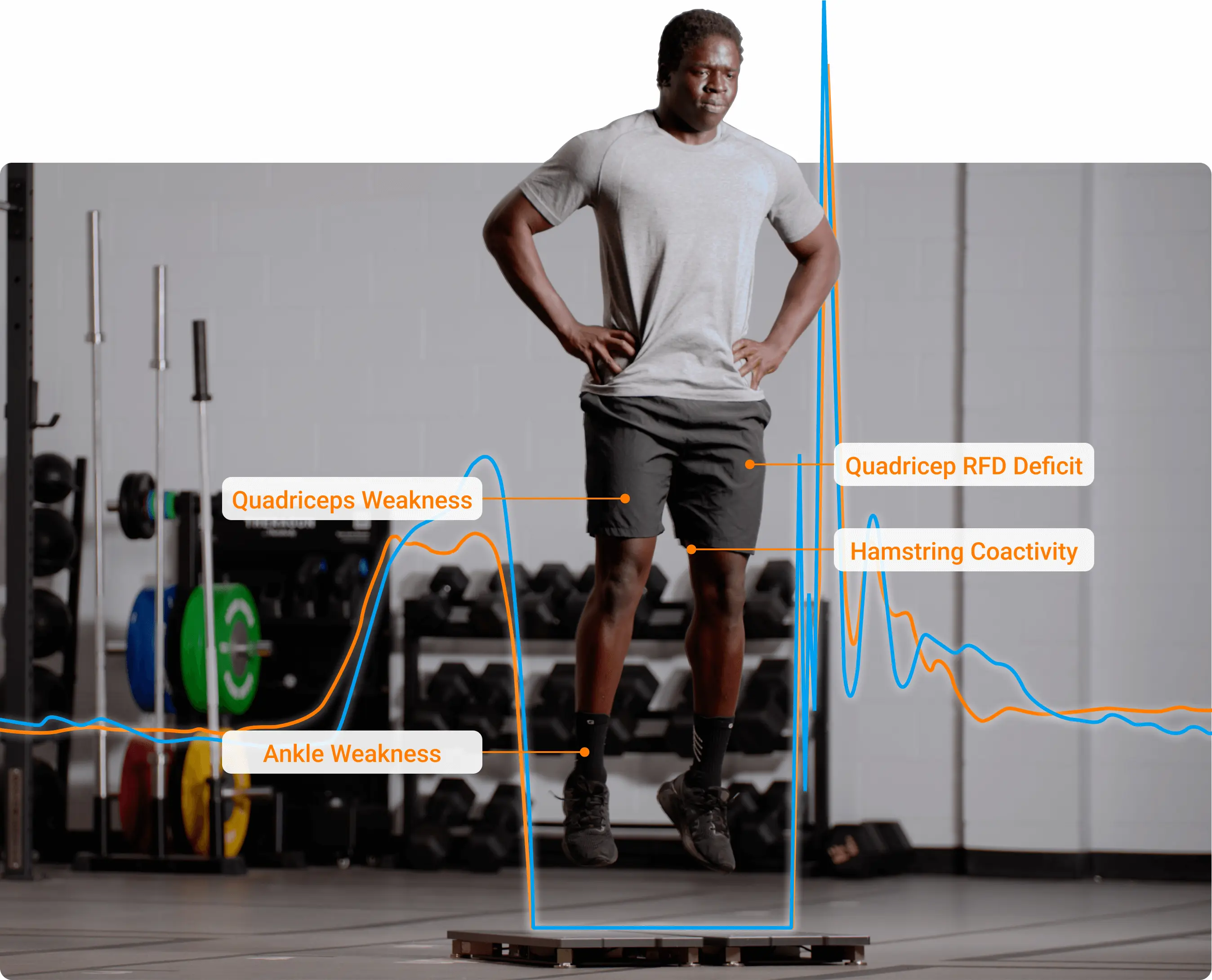
What key metrics do you focus on in this test?
There are several. First, we measure takeoff velocity, comparing the average takeoff velocity of the first five jumps to the last five to calculate a fatigue index. This shows the percentage decline in performance over the test. Averages tend to display better stability, which makes our data more reliable and comparable across groups and teams.
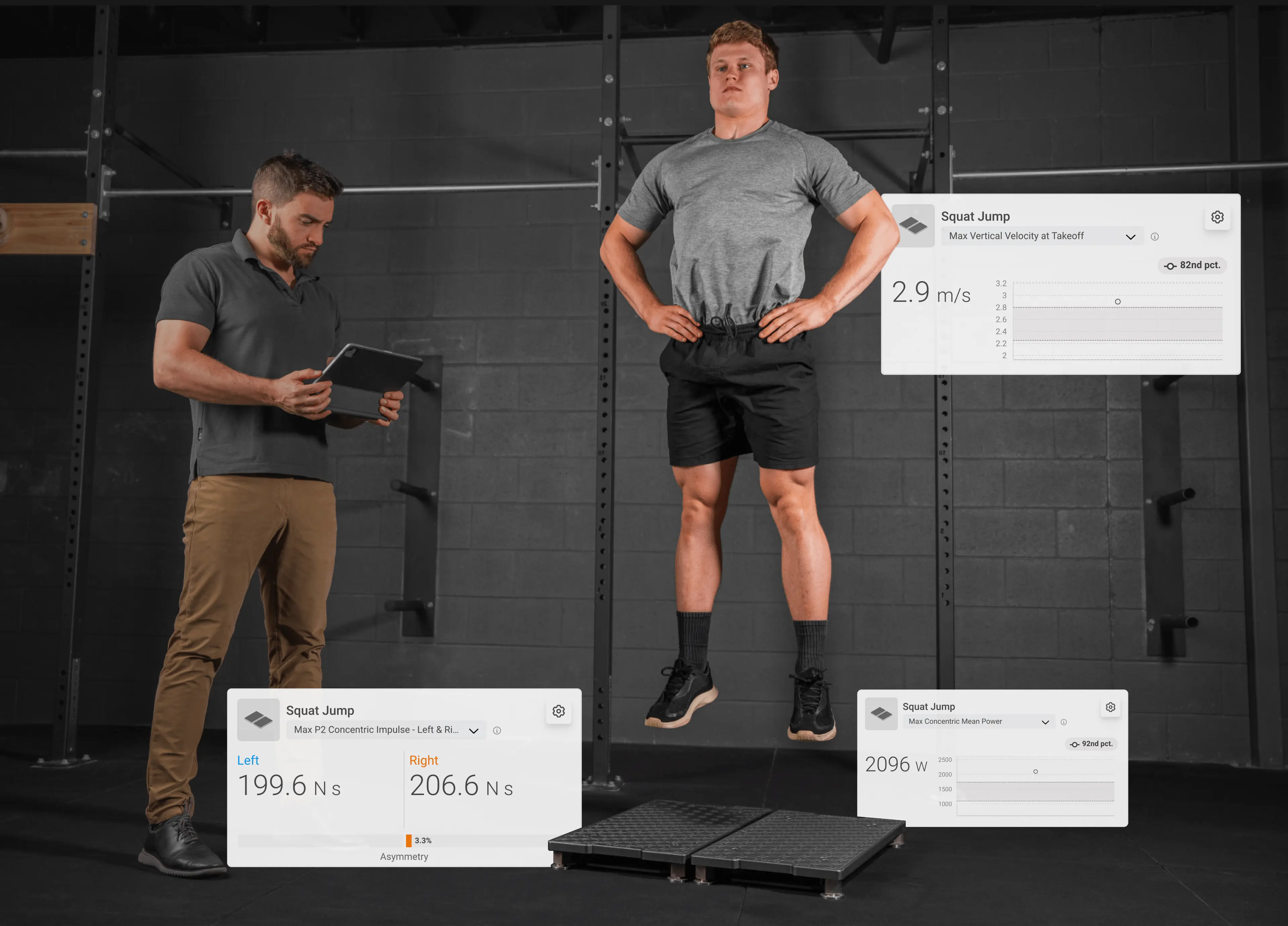
Common metrics used in the 80-second repeated squat jump test depicted as tiles from VALD Hub.
We also track asymmetry between limbs throughout the jumps. Interestingly, many athletes become more symmetrical as they fatigue – a finding that provides valuable context for return-to-sport decisions. Finally, we calculate the average power output for each test over the 20 jumps and add it all together. This provides a comprehensive view of an athlete’s work capacity across the entire assessment.
Interestingly, many athletes become more symmetrical as they fatigue – a finding that provides valuable context for return-to-sport decisions.
How do you apply test findings to training and rehabilitation?
We apply the test results to inform everything from exercise selection to return to play (RTP). For instance, if an athlete shows significant asymmetry under fatigue, we might include more unilateral exercises to target the weaker side.
We also focus on neuromuscular training under fatigue, like landing drills and perturbation exercises, to help athletes maintain proper mechanics when tired. This helps them develop the “muscle memory” needed to protect themselves in high-stress, real-world scenarios.
How do asymmetries influence your decision-making?
Asymmetries reveal key details about an athlete’s jump strategy, especially post-injury. We often see more symmetrical jumps in the last five repetitions compared to the first five. This occurs under fatigue, particularly in the uninjured limb, bringing the limb outputs closer together. These shifts highlight the importance of monitoring fatigue to inform return-to-sport protocols and ensure both limbs are fully prepared for competition.
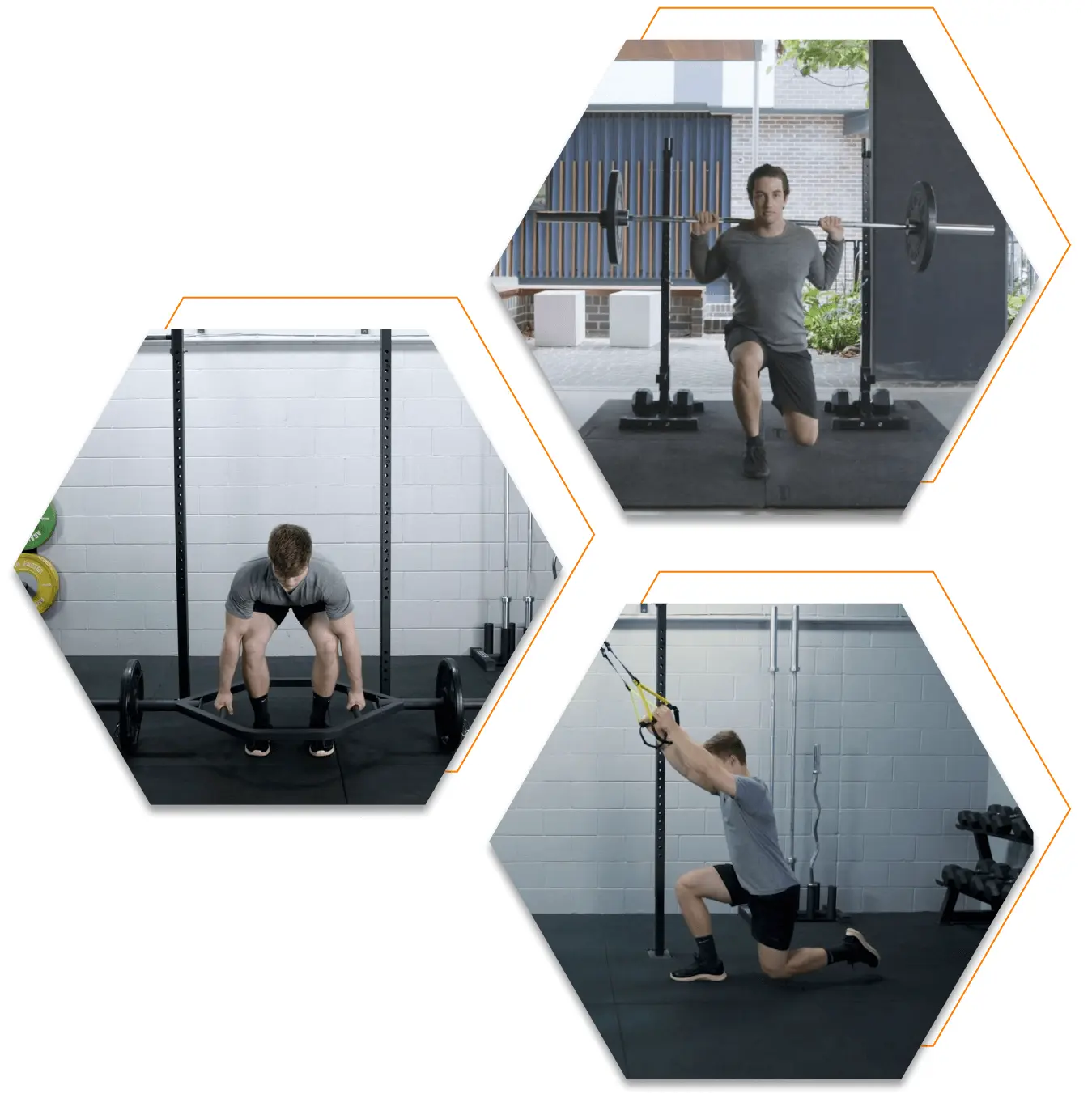
Various loading examples that may help mitigate some asymmetry in jump performance and improve RTP safety.
If an athlete starts with high asymmetry but achieves symmetry under fatigue, it may indicate an initial over-reliance on the uninjured limb. We use this data to fine-tune their training and ensure both limbs are developing evenly.
Can this test be useful for uninjured athletes?
Absolutely. Baseline testing in uninjured athletes helps establish performance benchmarks. This is especially important because relying on the contralateral limb as a benchmark post-injury can be misleading.
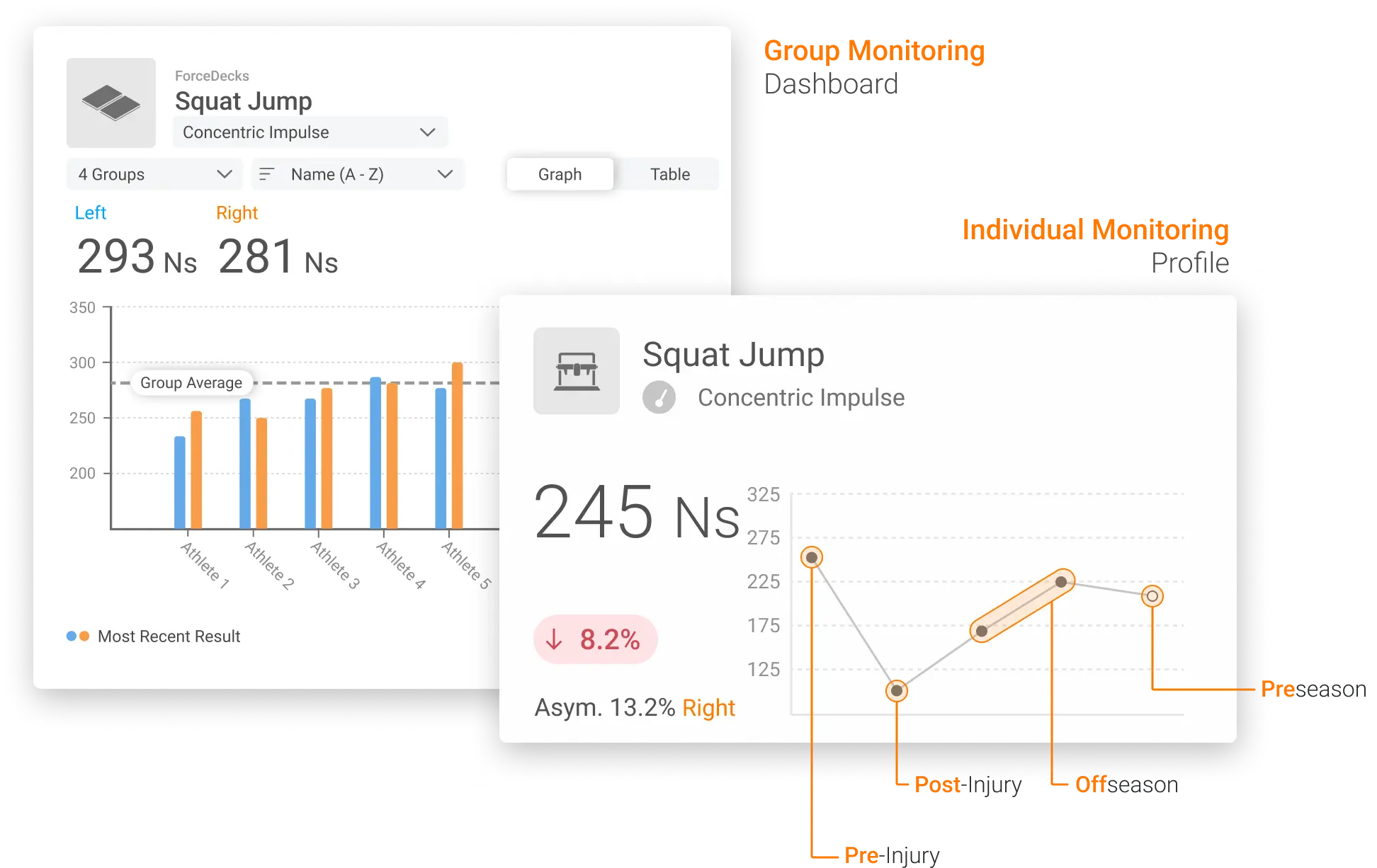
By collecting pre-injury data, we create a clearer picture of what “normal” looks like for that athlete. Interestingly, even in supposedly healthy athletes, we often uncover asymmetries that correlate with lower perceived limb function. Identifying and addressing these early can help aid in injury prevention strategies.
By collecting pre-injury data, we create a clearer picture of what “normal” looks like for that athlete.
What sports or scenarios benefit most from this test?
While originally designed for ski racing, the 80-second repeated squat jump test has shown value across multiple sports, including hockey, basketball and football. Any sport that requires athletes to maintain power, stability and control under fatigue can benefit from this type of profiling.
In sports like hockey, basketball and football, maintaining explosive power and speed during high-pressure, late-game moments is crucial. By tracking how an athlete's performance evolves over time, coaches can tailor training and recovery to build resilience. This testing also reveals subtle changes in movement strategies that traditional fatigue assessments might miss, helping teams address potential weaknesses and ensure athletes can sustain peak performance when it matters most.
Finally, this test is crucial for RTP scenarios, where we can best understand how this athlete's strategy shifts or reverts back under fatigue. Often athletes will look good during on-off testing when they’re fresh, but fatigue-related assessments can show what they’ll look like when they’re back on the field, court, ice or snow.
Final Thoughts
The 80-second repeated squat jump test provides a unique lens to view fatigue, performance and injury risk. Whether used for baseline testing or return-to-sport protocols, it equips practitioners with actionable data to optimize athlete health and performance.
If you would like to learn more about integrating VALD’s human measurement technology to enhance performance assessments, monitor athlete fatigue and support injury prevention, please reach out here.
